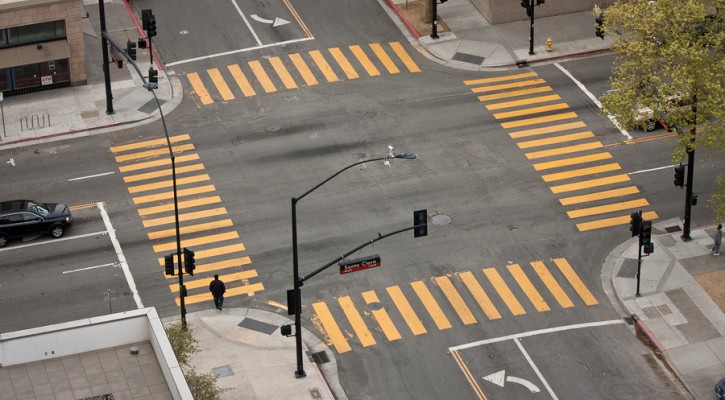
Dangers of the Intersection
October 15, 2014
It turns out, the most dangerous place to drive is closer to home than you might think. Rather than winding cliff-faced roads or high-speed highways, more collisions and deaths occur each year at this little-known, under-appreciated location: the common intersection.
In fact, more than 2 million collisions will occur at intersections this year. That’s close to 40% of all traffic accidents in the U.S., which is a substantial slice of the car crash pie.
The Deadliest Place in Town?
Intersections are a deadly place to be. More than 6,500 people die in intersection collisions annually, killing drivers, passengers, cyclists and pedestrians all across the country. Whether it’s an urban stoplight or a 4-way stop in the suburbs, the intersection is no place to let your guard down. Every single intersection can be considered the deadliest place in town.
Why? Why are intersections such a hazard? The National Safety Council attributes the majority of collisions to the following circumstances:
- Failing to scan intersections properly on approach
- Following other vehicles too closely
- Signaling improperly
- Misjudging the speed and distance of other vehicles
- Turning improperly
- Driving aggressively, including speeding and running red lights
What You Can Do
Although many drivers will fail to practice safe driving as they pass through intersections, those that read this drivers blog will be able to affect some change.
First of all, you can drive in an attentive, defensive mode. In other words, drive as if everyone else is out to get you! Expect other drivers to speed up through yellow lights, run red lights, tailgate, switch lanes erratically, etc. Stay alert and don’t get caught off guard.
You can also teach your friends and family to do the same. By driving smart, you are already being a good influence. You are teaching by doing. You can also point out the dangers of those who speed, tailgate, fail to signal and make other common mistakes. Or, discuss what to watch out for and the best way to deal with each situation.
It’s a dangerous world out there, especially for new drivers. So stay alert and drive safe no matter where you are, and take extra caution when approaching an intersection.
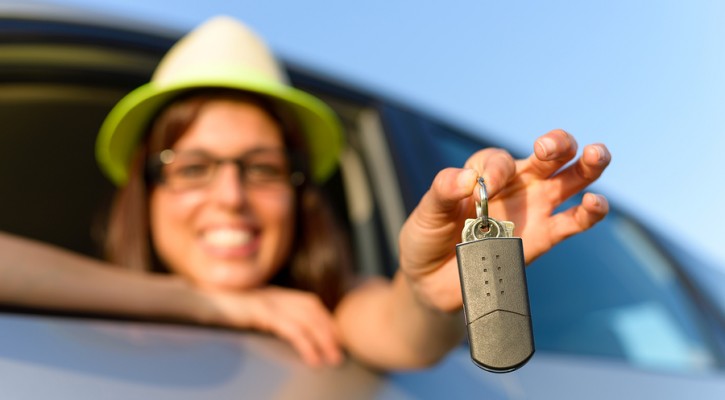
#DriveSafe to Pass the Test!
August 18, 2014
The #DriveSafe tips you encounter on social media are more than just suggestions. They are there to help new drivers become safer behind the wheel.
They are also great for improving driving skills in general. Since a safe driver is a good driver, and a good driver will always pass their behind-the-wheel test, teens should pay special attention to #DriveSafe advice.
The sooner new drivers practice these safe driving skills, the sooner they will master the art of driving. The sooner they master the art of driving, the sooner they will get their license, and the sooner they will taste that all-powerful feeling of freedom on the open road.
Today’s #DriveSafe infographic offers some great advice for avoiding distracted driving:
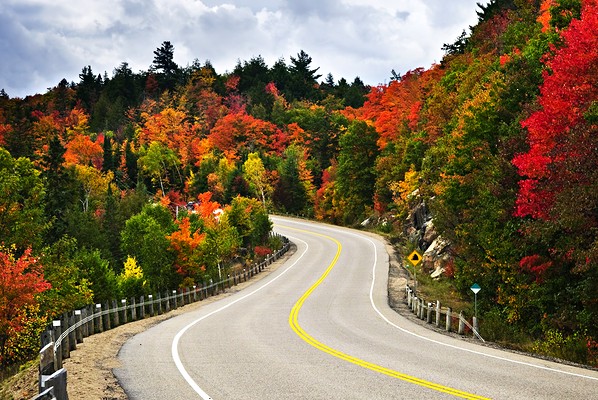
Dangers of Driving: Rural Roads Vs Interstates
July 30, 2014
The dangers of driving on a country road are much different than those of high-speed freeways and interstates. These two types of travel each offer their own hazards. Some are well-known, while others may be more surprising. That’s why it’s good to know exactly what you’re dealing with before hitting the highway.
Country Roads
You’d be forgiven if you assumed that country roads are safer than high-speed, high-traffic freeways. Actually, it’s quite the opposite. While more crashes happen in urban areas, more fatalities occur on those lonesome old country roads. Why?
- Curvy roads. Rural routes are often more narrow, with more curves and hills that block the view. All too often, drivers underestimate these curvy roads and drive too fast to maintain control.
- No passing lanes. Fast drivers can get frustrated easily out in the country. With little-to-no passing lanes, many people attempt to pass slower vehicles on the left side of the road. This can be especially dangerous in no-passing zones and areas where the view is blocked by hills or curves.
- No shoulders. Often, there is no shoulder to pull over onto when a tire goes out. This also means that there is nowhere to swerve to escape emergency situations (such as an on-coming vehicle passing a slower driver in the left lane).
- Wildlife. To top it all off, the local wildlife have been known to cause their fair share of crashes. Deer are especially infamous for causing car crashes out in the country. They will jump out in front of you at any given moment, whether they see you or not. In fact, sometimes they seem downright suicidal, waiting for a car to pass so that they can jump out at the last second.
Interstates
High speed interstate travel comes with its own fair share of troubles. While more deaths occur on country roads, far more non-fatal crashes happen on these high-traffic routes. Common reasons include:
- More traffic. The more cars on the road, the higher your chances of being involved in an accident.
- Congestion. When things get especially crowded, drivers begin to shed their safe-driving common sense. In an effort to force their way through slow-moving traffic, many people will make poor decisions, drive recklessly and even develop road rage.
- High speeds. When traveling at 70+ mph, it can be hard to react to an emergency situation before it’s too late.
- Fatigue. Driver fatigue is more common on interstates. This is because interstates and freeways have more long-distance travelers that have been on the road for hours and hours at a time. Too many people underestimate the dangers of driver fatigue. They try to keep on truckin’ no matter how long they have been driving and the result is often dangerous.
Knowing the risks of the road will help you to become a safer driver on your travels. Keep these common dangers of driving on your mind before you head out, and you’ll be ready for anything.
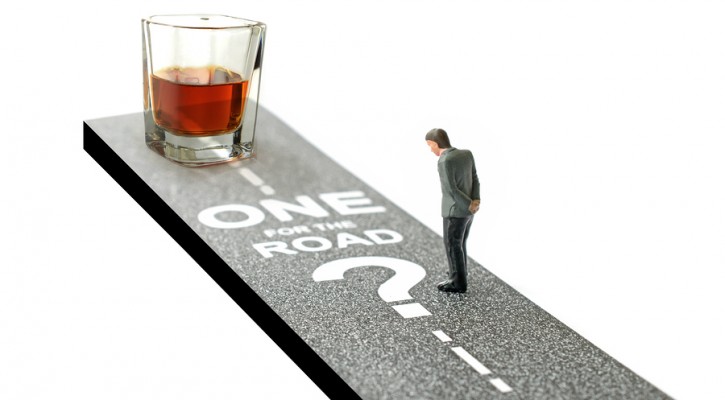
A Solute to the Designated Driver
July 2, 2014
The Designated Driver is an honorable breed. These awesome people make the roads a safer place and the world a better place.
While others are running wild, they remain safe and sober and ready to be someone else’s lifesaver. They save the lives of their friends and family. They save the lives of other drivers, cyclists, and pedestrians. They save the lives of anyone and anything that happens to lie in the war path of a potential drunk driver. They are heroes.
To all you sober drivers out there… we solute you!
And to all you new drivers out there, getting your license for the first time and getting that first taste of “freedom on the open road”… we encourage you to become a designated driver this year and help save lives!
With 4th of July around the corner, and summer festivities raging on until the end of the season, we can use all the designated drivers we can get.
So get on the #DD bandwagon and help keep our roads safe.

Safe Driving Tips for Pet People
June 30, 2014
It’s road trip season, and many pet owners will want to bring their furry friends along for the ride this summer. However, it’s best to read up on these safe driving tips before hitting the road:
- Feed long before you leave. By feeding your pets at least a couple of hours before the trip, they will have time for the food to settle. This will help keep them from getting car sick.
- Secure your pets. Few things are more distracting than a loose animal in a car. Whether you use a crate or a harness, make sure your pet is secure.
- Don’t leave your pet in the car. It’s summertime, and a hot car can quickly turn into an oven. Cats and dogs can get heat stroke just like humans.
Remember these safe driving tips – both for you and for your beloved pets – because a relaxing car ride is always more fun than a traumatizing wreck.

Anticipation: An Essential Survival Skill
June 10, 2014
As many new drivers will come to learn, there are a lot of idiots on the road. People drive carelessly, aggressively, emotionally, and are often distracted by phones, passengers, or just life in general. When it comes to avoiding these risky drivers, anticipation is key.
The first rule of anticipation? Give yourself plenty of time and space to watch, see and react. The farther your following distance, the bigger the picture. If you are tailgating the vehicle in front of you, all you can see is their bumper. However, if you hang back a few more car lengths you will be able to see the road ahead and the traffic ahead. You will be able to estimate the speed of traffic overall, as well as be able to spot any drivers traveling drastically slow or dangerously fast and manoeuvre around them. Plus, the bigger the cushion the more time you have to react to quick stops and emergency situations.
The second rule of anticipation: see everything. Don’t just focus on the car in front of you. Know what is going on a mile down the road, check your mirrors and blind spots, and keep a visual of the traffic all around you. Take note of any risky drivers, like maybe a car coming up from behind that is weaving in and out of traffic or a large truck riding your bumper. Besides weavers and tailgaters, also keep an eye out for drivers who are swerving (either due to distraction, fatigue or intoxication). These are all vehicles you will want to avoid and/or pass with extreme caution.
Finally, know that most drivers don’t follow the law all the time. They will turn without warning, change lanes without blinkers, cut people off in traffic, ignore yield signs, forget right-of-way rules, and sometimes even run right through stop signs and red lights. To anticipate this behavior it is important to follow the first two rules mentioned here, and then make judgments based on the other driver’s actions, speed and behavior.
Anticipation is an art. Mastering it will allow you to navigate the nation’s roads without incident and live a nice, safe life as a responsible driver.
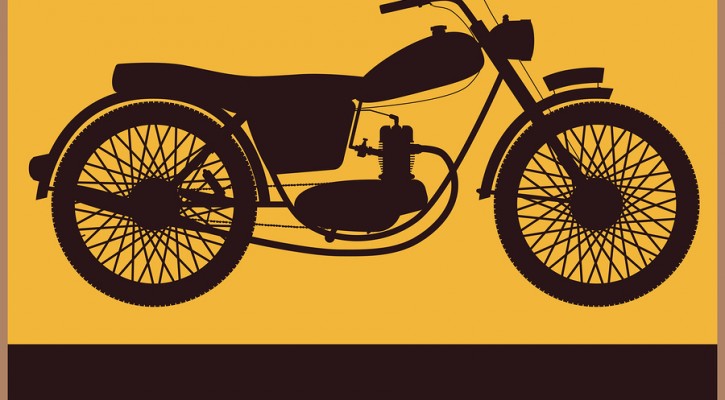
Motorcycle Awareness for the Clueless – Lesson 6
May 13, 2014
Lesson 6: Don’t Throw Anything Out the Window!
First of all, trash should never go out the window. Littering is both illegal and immoral. That’s a no-brainer. However, drivers also ditch compostable food such as fruits and vegetables, as well as dump out their ice or drinks while driving.
Now, imagine what might happen if your leftover ice or thrown-out banana peel landed in front of an unassuming biker. Anything that goes out the window poses a big threat to motorcyclists behind you, whether it hits them or lands on the ground and becomes a road hazard.
Another dangerous and often-unconsidered hazard is cigarette butts. Drivers often flick these out the window without a second thought, and they have been known to get stuck in motorcycle helmets or worse (for those riding without a visor or no helmet at all). Besides the risk to motorcyclists behind you, cigarette butts can also cause wildfires.
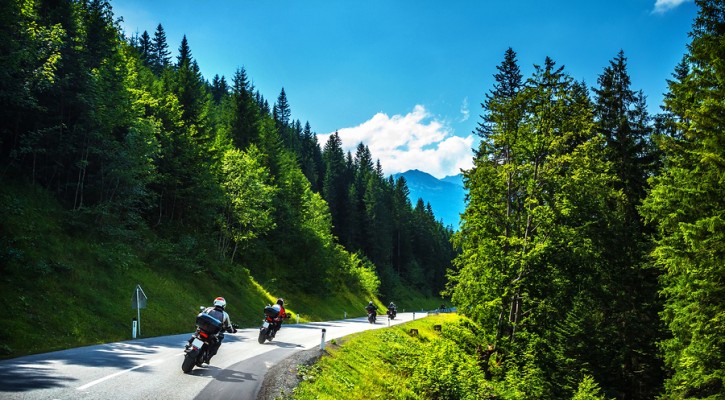
Motorcycle Awareness for the Clueless – Hill Country Driving Tips
May 11, 2014
Lesson 5: Hill Country Driving Tips
The weather is beautiful and the spring flowers are out, so take the scenic route safely with these hill country driving tips!
Curvy, hilly, winding country roads are a biker’s natural habitat. The killer combination of low traffic and natural hill country beauty make them ideal for summer rides. When driving on these scenic routes, it would be wise to learn a few tips about motorcycle awareness.
The hill country landscape is a tricky one. Tight curves and hills are great at blocking your view. Therefore, it is extremely important to maintain your lane and take extra caution when making left-hand turns.
Driving slowly always makes the road safer. Take this critical tip to heart when driving through the hill country, since narrow roads and low-speed curves can be especially dangerous. Some motorcyclists tend to veer very close to the center stripe when they misjudge a curve… as do plenty of cars. So, it’s always best to just take it easy and drive a little slower.
Finally, when driving behind bikers, be sure to give them plenty of space. The blocked views from hills and curves can result in sudden deceleration, and since motorcycles can slow down much quicker than cars, drivers should always allow plenty of following distance.
Now mind those winding roads and have a safe drive!

